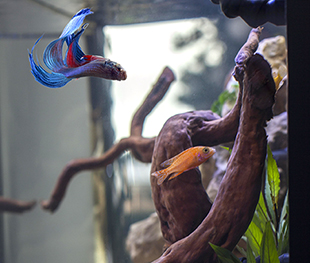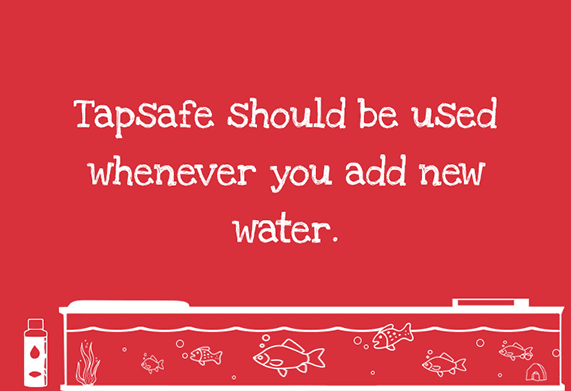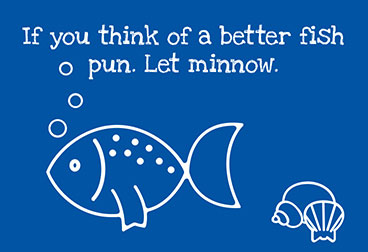Treating swimbladder infections
You look into your beloved aquarium and – boom – one of your fish is swimming on its side at the top of the tank but it’s not dead. It doesn’t seem to be able to balance or regulate its buoyancy and is struggling to get to the food. This sounds like a swimbladder infection.
What is a swimbladder infection?
Swimbladder disorders are stressful for your fish so it’s important to treat them as soon as possible. Delaying treatment may mean their weakened immune system contracts other diseases or that your fish becomes thin and malnourished as they’re unable to feed.
Signs of a swimbladder infection include:
- Fish swimming on their side or upside down
- Difficulty with buoyancy and staying at a certain depth in the tank
- Loss of appetite or difficulty eating
- Lethargy and decreased activity levels
- Curved back
- Distended belly
How should I treat swimbladder infections?

Swimbladder disorders are stressful for your fish so it’s important to treat them as soon as possible. Delaying treatment may mean their weakened immune system contracts other diseases or that your fish becomes thin and malnourished as they’re unable to feed.
Use a swimbladder treatment such as Swimbladder Treatment Plus, that is designed to attack the bacterial infection that causes the problem. Work out how much treatment you need for your aquarium using the dosage calculator and follow guidelines carefully; taking note of any instructions or repeat dose measures.
This treatment should be used in partnership with Aquilibrium First Aid Salt which will help your fish with successful osmoregulation. Osmoregulation is the way in which the salinity of your fish’s body harmonises with the salinity of the surrounding water, which speeds up recovery. The swimbladder is a crucial organ in successful osmoregulation, so supporting it gives your fish the best chance of recovery. Learn why tonic salts help fish in a freshwater aquarium.
Knowing your fish and their ‘normal’ behaviour will help you spot problems early and enable you to deal with them promptly.
So, why does this happen?
In a fish, the swimbladder acts as a float (it’s properly known as a hydrostatic organ), which allows the fish to stay balanced under the water when swimming.
Fish affected by swimbladder issues struggle to stay buoyant. They typically look well but float near the water’s surface, or sink to the bottom, wobbling about on their side or upside down.
They can get exhausted trying to stay upright, or trying to feed. This can be caused by various problems including a sudden change in water temperature although a swimbladder infection is the more likely cause.
Other causes of buoyancy issues
Swimbladder problems can also be hereditary. ‘Fancy’ goldfish like moors; veiltails and orandas often have misshapen swimbladders and are particularly prone to the problem. Tropical fish such as; Betta (Siamese Fighters), Platys and Angels are also more susceptible to swimbladder disorders, so keep an eye on their behaviour.
Buoyancy problems can also be caused by a fish swallowing too much air. This can happen if they gulp air when eating from the water’s surface. It may be beneficial to hold the food further into the water as you feed (with clean hands), to force the fish to swim down to eat. Alternatively, purchase a tablet-type food that you can stick on the inside of the glass, part way down.

How can I prevent swimbladder infections in my fish?
There are few ways you can prevent infections in your fish, such as:
- Maintaining a clean and well-maintained aquarium: Regularly clean the tank, ensuring that there are no excess waste or debris that can contribute to bacterial growth.
- Monitoring water quality regularly: Test the water for pH levels, ammonia, nitrate, and nitrite levels to ensure they are within the appropriate range for your fish. High levels can stress fish and make them more susceptible to infections.
- Avoiding sudden changes in water temperature: Gradually acclimate new fish to the tank’s temperature and avoid rapid fluctuations in temperature, as this can stress fish and weaken their immune system.
- Feeding a balanced diet: Provide your fish with a varied diet that includes nutritious foods. Avoid overfeeding, as excess food can lead to water pollution and bacterial growth.
Monitoring fish behaviour: Regularly observe your fish and look for any signs of illness or abnormal behaviour. If you notice any changes in their swimming patterns or if they are struggling to stay buoyant, it could be a sign of swimbladder issues.
Are swimbladder infections contagious?
Swimbladder infections are not contagious among fish in the same tank. However, it’s always recommended to isolate the affected fish to prevent any potential spread of infection. That way you can ensure the affect fish are treated properly and monitor their progress.
How long does it take for a fish to recover from a swimbladder infection?
The recovery time can vary depending on the severity of the infection, the treatment, and the overall health of the fish.
With appropriate care and treatment, some fish may start showing signs of improvement within a week or two. However, in more severe cases, it may take several weeks for a fish to fully recover and regain its normal swimming abilities.


